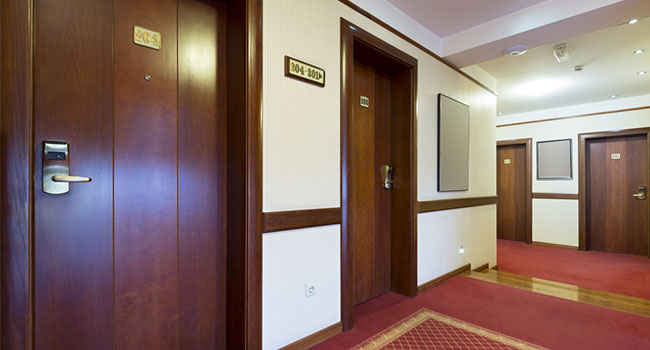
Housekeepers to Ask Las Vegas Hotels for Panic Buttons
Negotiations begin next month, and union leaders will also bring a request for panic buttons on behalf of the more than 14,000 housekeepers working on the Strip and in Vegas' downtown area. The goal of the wireless devices, which alert managers if workers are attacked, is to prevent sexual assault.
- By Jessica Davis
- Jan 29, 2018
Culinary Workers Union Local 226, which represents tens of thousands of hotel workers in Las Vegas, will ask casino-resort operators to give every housekeeper a panic button as it begins negotiating new contracts. The request is similar to safety ordinances recently approved in other cities.
The contracts of 50,000 union members, including Las Vegas housekeepers, cooks, bartenders, and food and cocktail servers, expire at midnight May 31. Geoconda Arguello-Kline, Secretary-Treasurer for the local, said the union will work with companies to protect existing benefits, increase wages, protect job security for workers as hotel-casinos increasingly adopt new technology, and strengthen language against sexual harassment.
Negotiations begin next month, and union leaders will also bring a request for panic buttons on behalf of the more than 14,000 housekeepers working on the Strip and in Vegas' downtown area. The goal of the wireless devices, which alert managers if workers are attacked, is to prevent sexual assault.
"We want safety for all the workers," Argüello-Kline told The Associated Press. "We want to have some language in the contract to protect more the people who work inside the hotels. . . . We know what's going on with sexual harassment. No woman should have to go through that."
The union did not provide figures related to sexual assault situations housekeepers have faced in the past, but the request is in line with measures taken against assault in other cities. Housekeepers at unionized hotels in New York City have been carrying panic buttons since 2013, and the Chicago City Council passed an ordinance in October requiring hotels to provide panic buttons to workers if they work alone in guest rooms.
About the Author
Jessica Davis is an Associate Content Editor for 1105 Media.